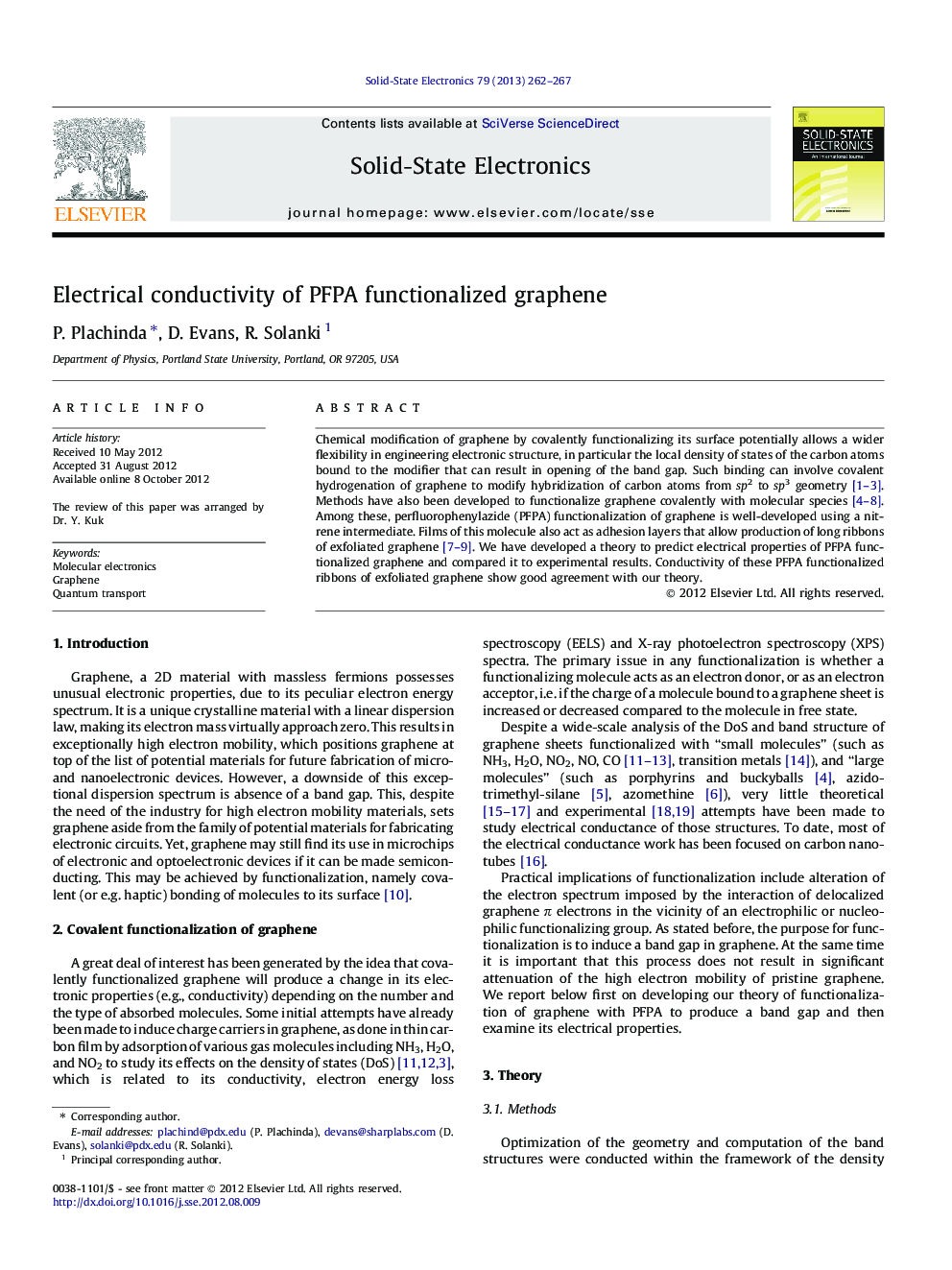| Article ID | Journal | Published Year | Pages | File Type |
|---|---|---|---|---|
| 748470 | Solid-State Electronics | 2013 | 6 Pages |
Chemical modification of graphene by covalently functionalizing its surface potentially allows a wider flexibility in engineering electronic structure, in particular the local density of states of the carbon atoms bound to the modifier that can result in opening of the band gap. Such binding can involve covalent hydrogenation of graphene to modify hybridization of carbon atoms from sp2 to sp3 geometry [1], [2] and [3]. Methods have also been developed to functionalize graphene covalently with molecular species [4], [5], [6], [7] and [8]. Among these, perfluorophenylazide (PFPA) functionalization of graphene is well-developed using a nitrene intermediate. Films of this molecule also act as adhesion layers that allow production of long ribbons of exfoliated graphene [7], [8] and [9]. We have developed a theory to predict electrical properties of PFPA functionalized graphene and compared it to experimental results. Conductivity of these PFPA functionalized ribbons of exfoliated graphene show good agreement with our theory.
► We discussed possible way of graphene functionalization for microelectronic applications. ► We calculated electrical conductivity of N-PFPA functionalized graphene. ► We compared calculated results with the experimentally measured conductivity.
